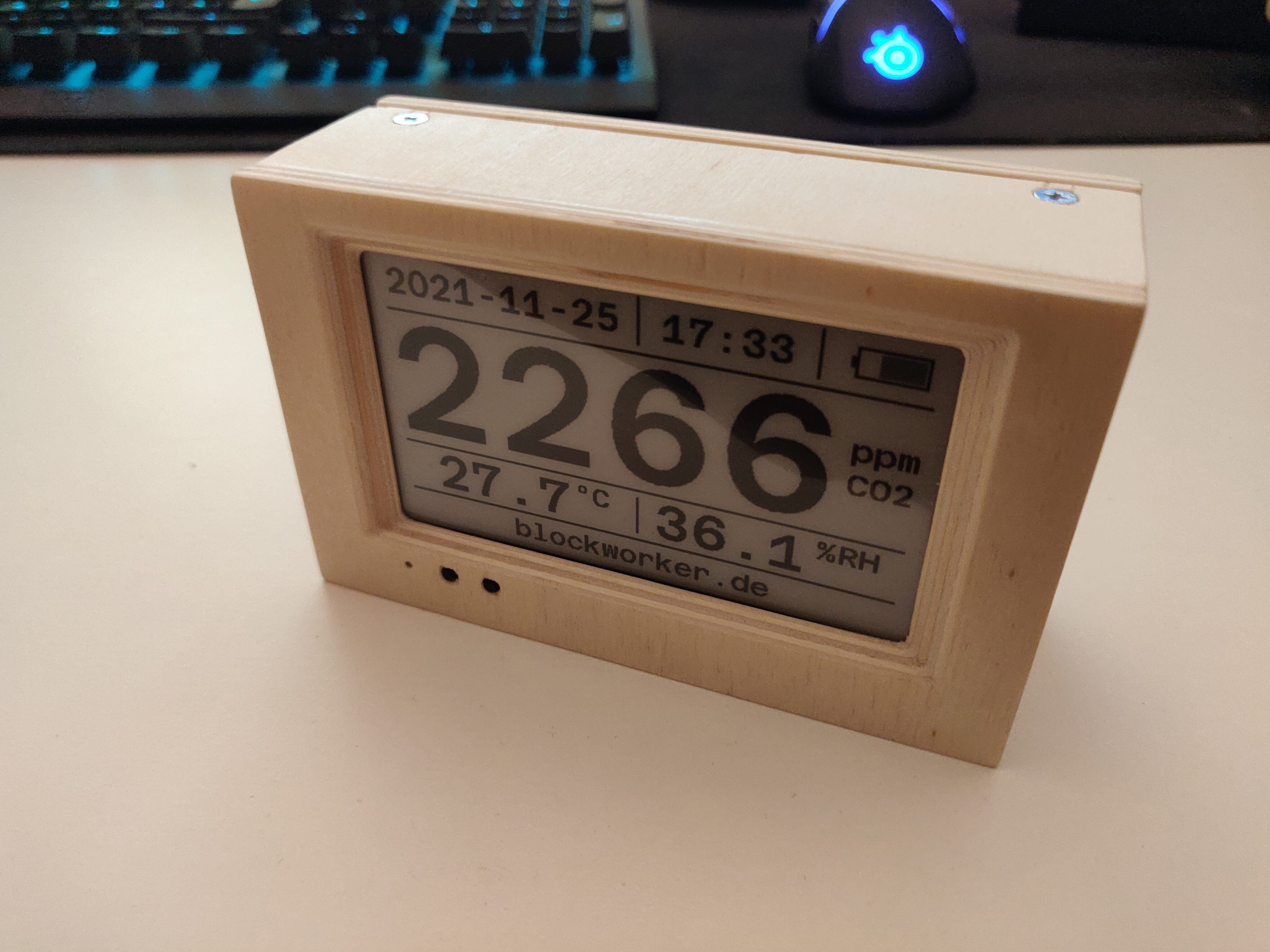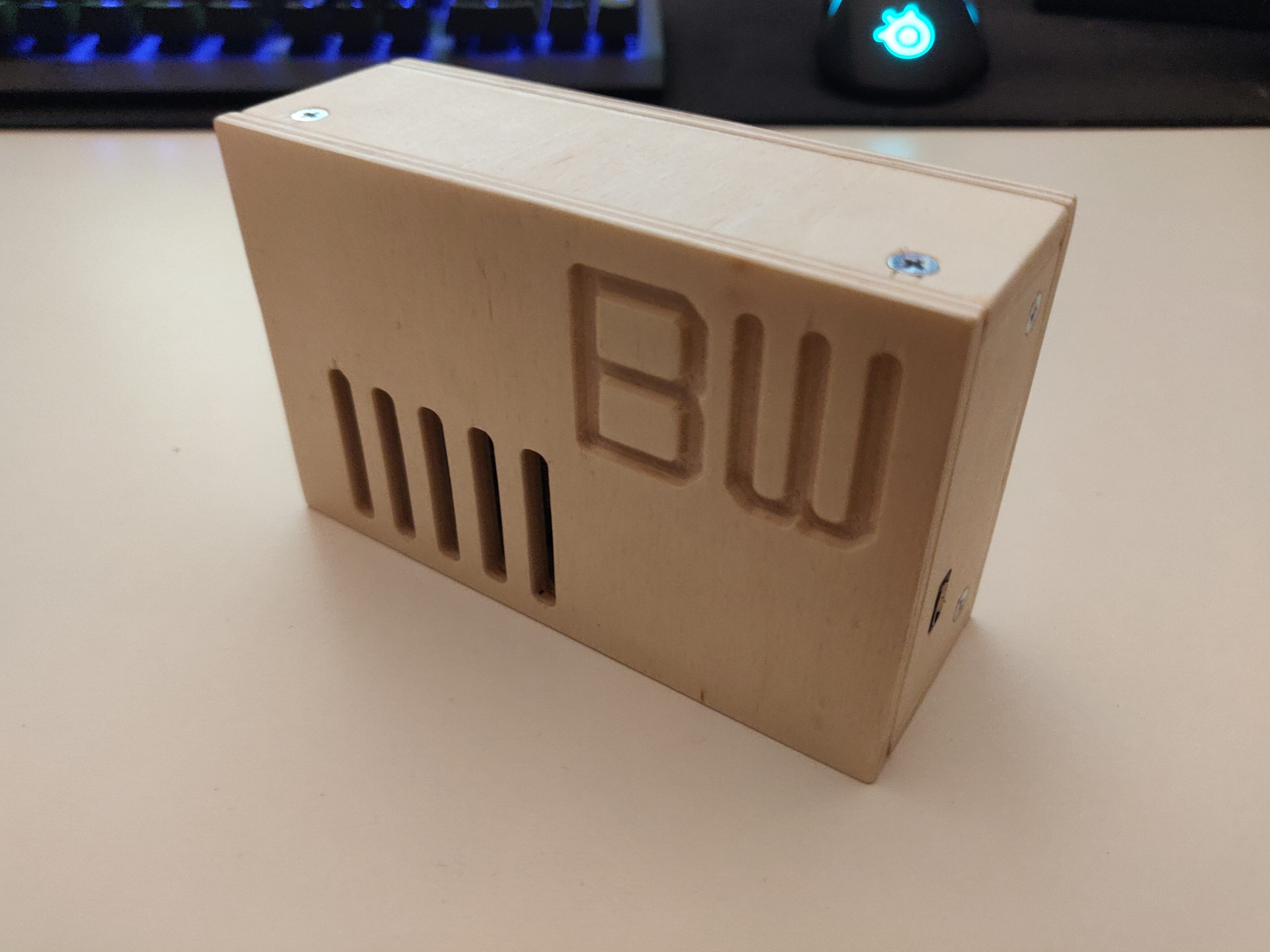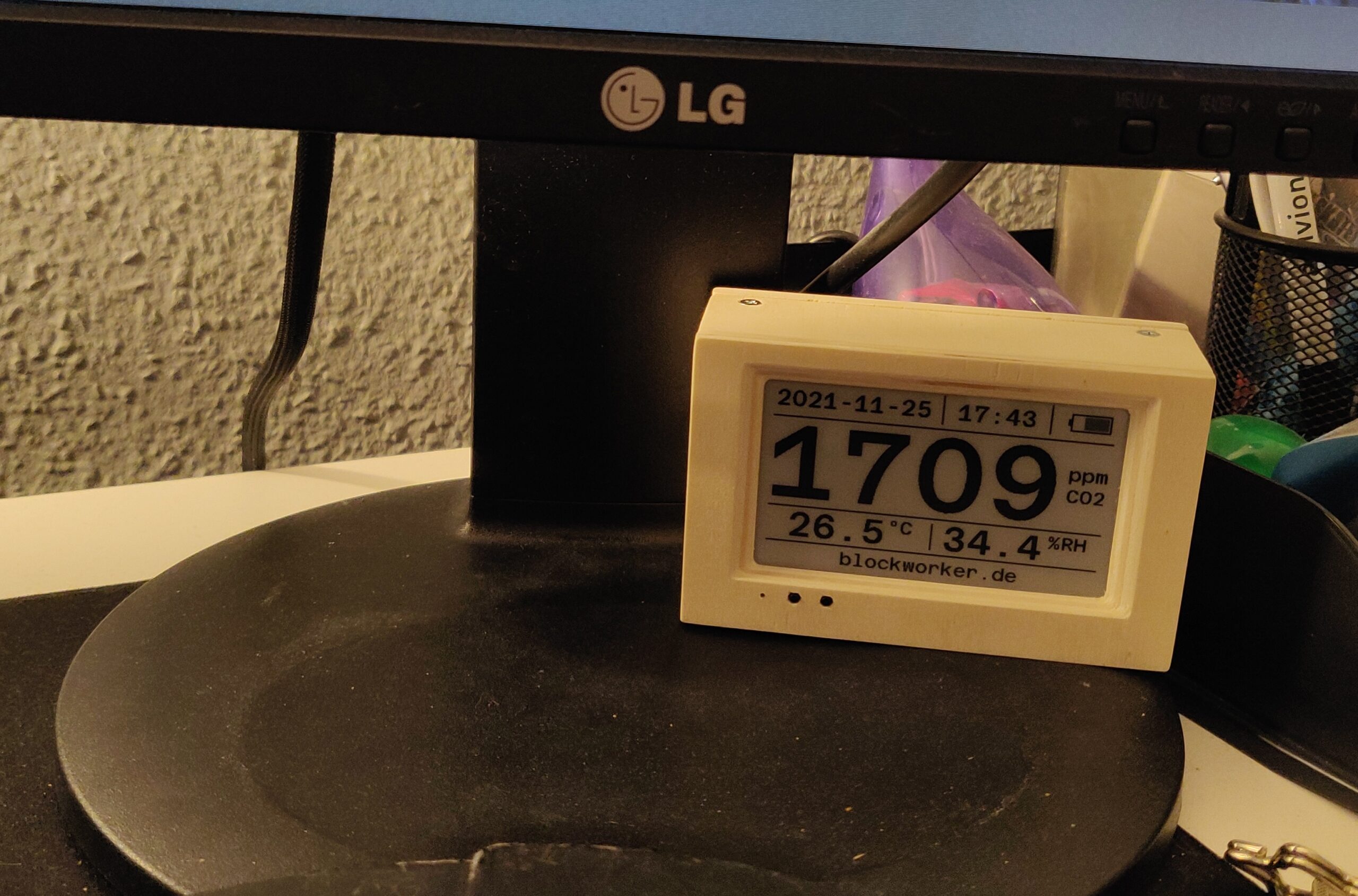To summarise this project, let’s make a list of features, as I did with my previous projects:
- High-accuracy CO2, temperature, and relative humidity sensors
- High-resolution, low-power 3.7″ E-Paper display
- Built-in clock and calendar
- Configuration and charging over USB
- Two user buttons and status LED for easy interaction and self-calibration
- Configurable timed standby mode
- Very long battery runtime between charges (up to multiple weeks)


In short, I achieved or exceeded all of the goals I set for this project – it was a complete success.
And in addition to that, it taught me a lot about low-power designs, EPD technology, sensor technology, and building smaller devices.
I’ve been using the CO2 station ever since, having a dedicated spot for it under one of my monitors, so that it’s always in view.
I especially love how it ended up being a “set and forget” device most of the time – all it needs is an occasional charge and clock adjustment (about once every 3-4 weeks, with my settings and 8 hours of standby per day), as well as a quick calibration in outside air once every 3 weeks.
What doesn’t feel great is having to continuously increase the calibration reference value over time, as the atmosphere’s CO2 concentration rises…

So in conclusion, I am extremely happy with this project. This was the first time I completed a project and didn’t have the feeling that it was lacking something (compared to my initial imagination of it).
Even multiple years later, at the time of writing, I feel like there aren’t too many things I’d change if I were to design another CO2 Station now.
Thanks for reading, and until next time!
Leave a Reply